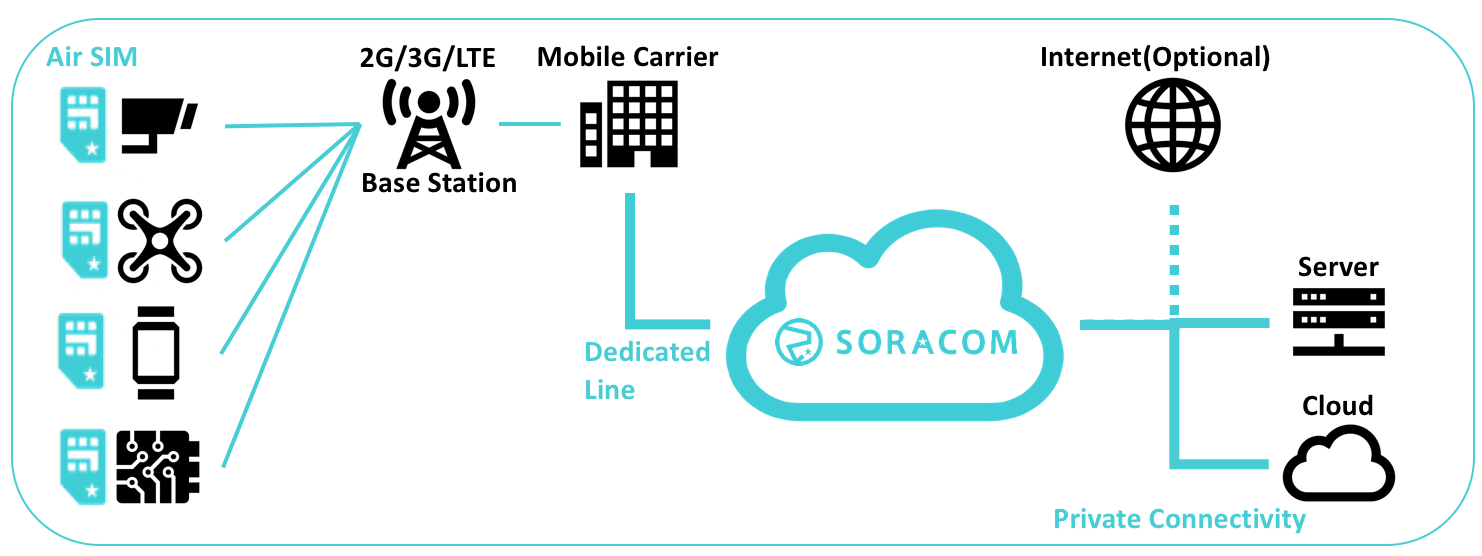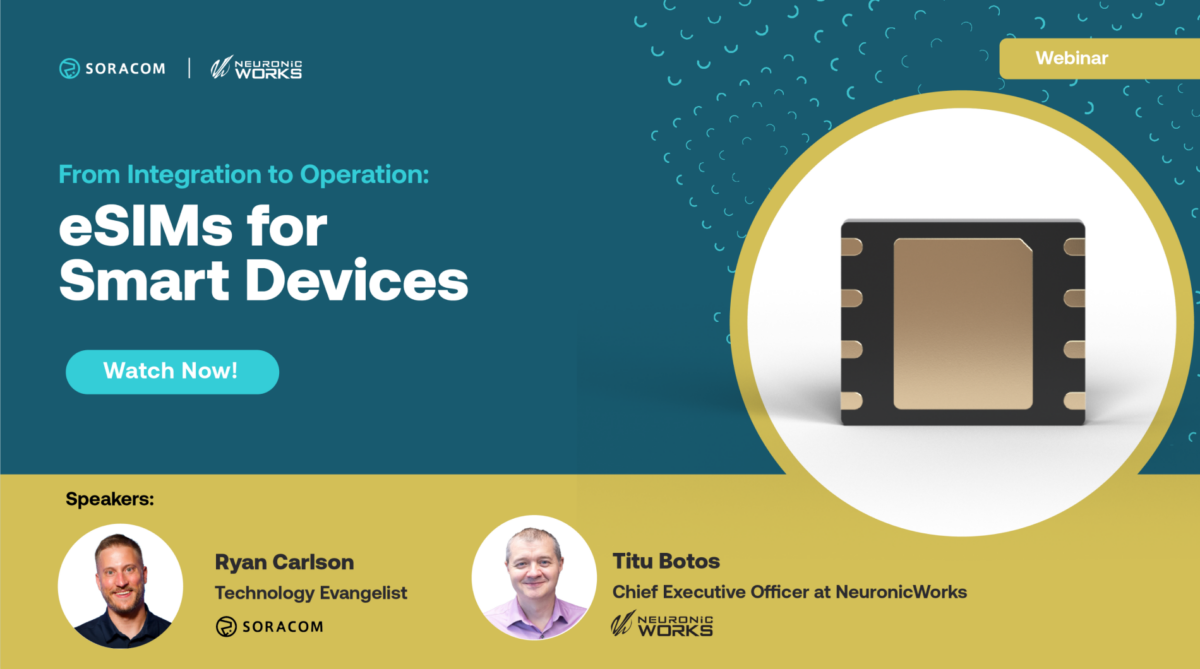Industrial OEMs: Why a Cellular First IoT Strategy Makes Sense

In the first blog post of this series, Rich Rogers discussed the first step to joining the Industrial IoT revolution: connecting your equipment to the cloud.
In the next blog post, we discussed some different ways to get connected and how we firmly believe cellular is the way forward for OEMs.
Today, I’ll be diving deeper into the world of Industrial OEMs — companies that provide industrial equipment to factories, agricultural fields, mining sites, and buildings — and share some of the lessons learned from real-world deployments. These companies provide the indoor and outdoor equipment that powers our life behind the scenes, from gas turbines, tractors, excavators, and forklifts to air cooling systems, compressors, CNC machines, and HVAC systems.
When we talk to Industrial OEMs, we often spend considerable time helping them choose the right connectivity option. While there are a number of different ways to connect Industrial equipment (Wi-Fi, Ethernet, Cellular, LPWAN), we usually recommend that Industrial OEMs have a pre-configured cellular-first strategy. Here’s why.
1. Customer IoT networks are not dependable
It’s not unusual for Industrial OEMs to assume that they can rely on the end customer’s network (Wi-Fi hot spots, Ethernet) for connectivity. After all, the customer provides the power for the equipment, so why not the connection? And this exact model seems to work well for consumer OEMs.
However, working with real-world deployments we learned that the reliability of customer Wi-Fi and Ethernet connections in indoor and outdoor environments is often sub-optimal. In many cases, an OEM would connect their equipment to a customer’s Wi-Fi only to begin a costly debugging process.
Issues ranged from radio interference to blind spots to signal strength issues. Frequently, because Internet connectivity is a low priority at many of these sites, machines would send missing or null data due to packet loss. In several cases, we also estimated the cost of deploying and installing ethernet cables and associated router gear per unit in a packaging facility, only to find that the equipment had to move to another location due to space restrictions and we had to reinstall the cabling.
In factory environments, where the production manager typically has less influence on the IT department or layout of Wi-Fi access points, we often spend cycles working with IT to connect equipment and complying with IT security policies such as firewalls and DMZ access. In a few cases, even after getting a green light from the IT department, we underestimated the power of the IT security policy of the customer’s parent company, only to discover few weeks later that they had shut off our Internet connection to the machine.
Industrial OEMs should own the “data channel” themselves so they can get diagnostic and operational data without any disruption. This data becomes a crucial asset an OEM can use to provide better customer service, greater understanding of a customer’s operating environment and ultimately to improve the design of newer models.
By investing in cellular, particularly Soracom Air, Industrial OEMs can ensure that they do not need to rely on the customer’s network and can own the end-to-end data channel. For example, Soracom is engaged with one of the largest manufacturers of office equipment. This OEM provides copiers and scanners to customers worldwide. Unfortunately, they are treated as “uninvited guests” on the customer’s network and have unreliable or sometimes no access to Internet. As a result, this OEM simply rolls in their equipment with a pre-configured cellular connection and get diagnostics data sent back to their servers for predictive and preventative maintenance of the machines.
By not depending on customer’s network and owning the data channel via cellular, Industrial OEMs can get uninterrupted access to their data from their machines.
2. End-to-End IoT Security
Security is priority zero when it comes to connecting Industrial equipment to the cloud. It is not optional. It is mandatory and has to be implemented at all the layers of the stack. In a few deployments, where we relied on Wi-Fi (WPA2) and Ethernet over VPN to connect to the cloud servers, customers were not happy because the traffic still goes through the open Internet. Security of Wi-Fi routers is questionable. The security of WPA2, for example, ends at the router. Your connection from a router to the server in the cloud is protected through other application-level protocols (SSL/HTTPS) but still goes through the vulnerable Internet and hence remains susceptible to attacks. Likewise, in the case of cellular data, your traffic is encrypted (data and voice) from device to the cell tower. Your connection from cell tower to the server in the cloud (for example, AWS) also needs to be secured. If the underlying connection isn’t secure, it’s like you wear a bullet-proof vest from your bedroom to your front door, but then take it off when you go outside.
By using Soracom services, the traffic between cell towers and your server in the cloud can go through its own secure dedicated line that never touches the open Internet. This architecture is inherently more secure for Industrial OEM use cases. Since Soracom is an MVNO and cloud-native connectivity platform, the connection from cell tower exchange to AWS cloud ensures end-to-end security.

Since IoT is not just one-way data protection but also command and control back to the machine, security is even more important. For example, IHI Corporation, one of the largest manufacturers of gas turbine power plants in the world, uses SORACOM Air to get maintenance and diagnostic data remotely. The security of power plants is of utmost importance and cannot be put at risk by the use of the open Internet.
Soracom significantly enhanced the security posture of the remote monitoring service of power plants using SORACOM Gate. This service creates a secure channel between workstations at both ends so operators can not only have secure, remote access to the diagnostic data of the power plant but also login securely to take corrective actions.

3. Stellar On-boarding Experience
When designing Industrial IoT experiences, we believe that technology should disappear. IoT features of Industrial equipment should not only be easier to use but also easier to set up for distributors/dealers. If the onboarding experience is tough or requires talking to multiple stakeholders like IT departments and, setting up DMZs, obtaining IP addresses, the initiative often fails to get off the ground. Moreover, we cannot expect to train and educate service technicians of distributors on troubleshooting IT-related issues.
IoT should be simple. In a few customer scenarios, where we connected the factory equipment like Industrial printers and motors using Wi-Fi/Ethernet, we implemented the firmware and relevant input screens of the industrial equipment HMI to ask for IP addresses and login credentials during the first-time setup. Even though we thought we implemented a friction-free “onsite” experience for distributors to set up the equipment, we were inundated with support calls and troubleshooting issues related to connection protocols, provisioning, and linking the customer account to the machine.
In retrospect, a cellular-based connection lets distributors roll in pre-configured equipment directly to a customer site. With Soracom’s SIM-card-based authentication and provisioning process, we can activate the SIM in a few clicks post-deployment, and the machine will start sending data right away. There was minimal setup required by the distributor. Moreover, it saves a ton on firmware/HMI development and support costs. With Soracom Air, Industrial OEMs can manage their SIM cards and activate/deactivate, change rate plans and manage them online using the online user console.
4. What about the cost associated with cellular IoT connections?
It is true that cellular data rates typically add to both the overall BOM and the overall lifetime operational costs of industrial equipment. It will get expensive if the Industrial OEM companies sign up data usage long-term contracts with high upfront costs. Hence, we recommend Pay-As-You-Go pricing where you only pay for what you use.
When the equipment is on-shelf or in a warehouse, there is no charge. While there is a small charge to acquire the SIM card and modem, it’s nominal when compared to the overall BOM of the Industrial equipment. We believe Soracom’s Pay-As-You-Go pricing is one of the key differentiators in the market today. In the old world, you needed to pre-purchase data per SIM. This encourages the wrong behavior for customers to over-buy data due to the high overage fees. Soracom is pay-as-you-go and data is pooled across all SIMs, no need to worry about overage fees, and you pay less per MB as your data grows due to volume discounts.
We recommend Industrial OEMs have a cellular-first strategy and partner with a true Pay-As-You-Go cellular provider like Soracom. We would love to learn more about your Industrial deployments.
Let us know what you think. Please use the comments section to provide more feedback.
………………
Got a question for Soracom? Whether you’re an existing customer, interested in learning more about our product and services, or want to learn about our Partner program – we’d love to hear from you!






